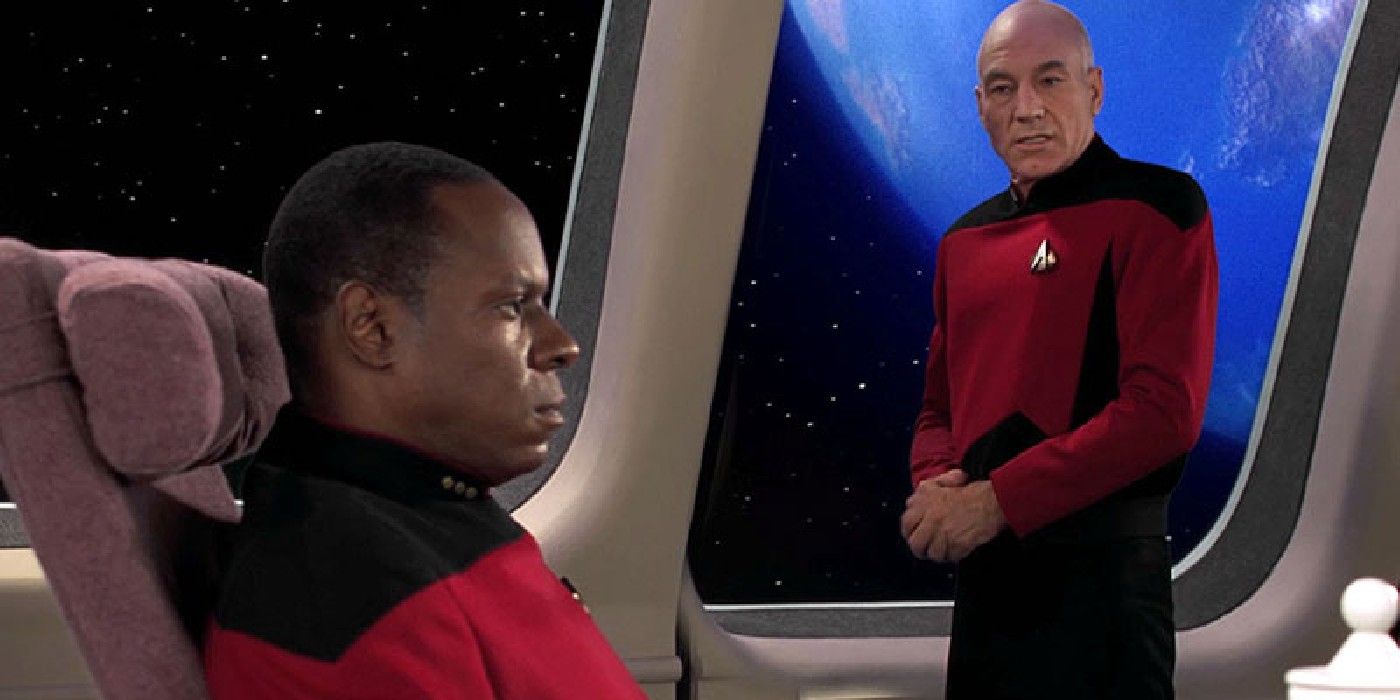Star Trek: The Next Generation initially faced an unexpected uphill battle to get on the air, but the ultimate solution permanently changed the television landscape. After the massive success of Star Trek VI: The Voyage Home, Paramount decided that Star Trek should return to the small screen with new adventures. To the shock of many, this new TV series would feature a new crew, leaving Captain James T. Kirk (William Shatner) and Spock (Leonard Nimoy) to the movie franchise.
Initially conceived of by Star Trek franchise creator Gene Roddenberry, Star Trek: The Next Generation would take place about a century after Star Trek: The Original Series. It would follow the adventures of Captain Jean-Luc Picard (Patrick Stewart) aboard the Enterprise-D. Feeling confident in their crown jewel franchise, Paramount assumed there would be rabid interest from the major television networks to carry the new series, but that was very much not the case.
Why Television Networks Didn't Want Star Trek: TNG
To Paramount's surprise, there was little interest in TNG from the major networks. None of the four major American networks at the time - NBC, ABC, CBS, and Fox - would offer the show a full season order. TNG was perceived as a risky prospect, an incredibly expensive show that was met with immediate fan backlash when it was announced. Fox offered to order 13 episodes - in that era roughly half a season - and CBS showed some interest in adapting it as a TV movie, but Paramount couldn't justify the cost of making a quality Star Trek show without a full season commitment.
Paramount's eventual solution for Star Trek: The Next Generation was inspired. Rather than partner with a network, the studio would fund and produce the series in-house and distribute the show through first-run syndication. The syndication process meant selling the series to local affiliates, market by market, rather than going through a major network. The plan worked, with Star Trek: The Next Generation season 1 carried in almost every market in America and eventually becoming a ratings behemoth on par with major network shows. TNG season 7 would be nominated for Best Dramatic Series at the Emmys, the only syndicated series to ever receive that honor.
How TNG's Success Changed Syndication
Before TNG, first-run syndication in America was largely occupied by low-budget sitcoms and children's programming. That changed after TNG's phenomenal success, with first-run syndication becoming the territory of similar genre shows that would never fly on a major network. Notable first-run syndicated shows that followed in TNG's wake included Xena: Warrior Princess, Baywatch, and the third entry in the Star Trek television franchise, Star Trek: Deep Space Nine.
By the late 1990s the syndicated market began to erode, as new network UPN began gobbling up formerly independent stations and cable television rapidly expanded. The fourth Star Trek TV series, Star Trek: Voyager, would become UPN's flagship series, ending the franchise's relationship with first-run syndication. It may have been a short-lived revolution, but Star Trek: The Next Generation proved there were ways to reach audiences beyond the traditional channels.



